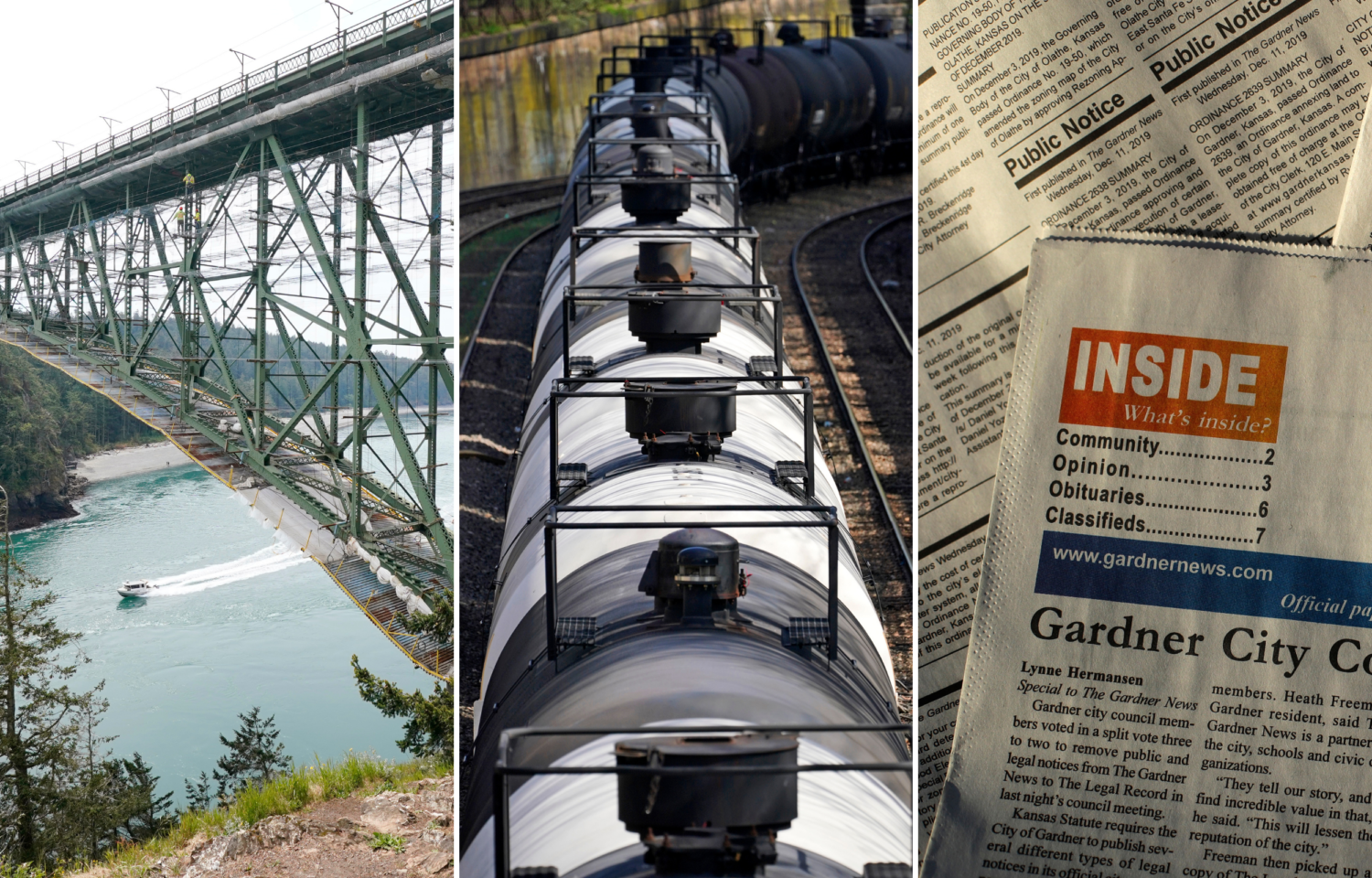“Local news is a pillar of democracy’s civic infrastructure — and it is crumbling,” declared a letter to the Congressional leadership from the Rebuild Local News Coalition, which represents more than 3,000 local newsrooms and many leading free press groups. The coalition, which I help coordinate, urged Congress to put assistance for local news in the infrastructure bill.
This comes on the heels of Sen. Maria Cantwell, the chair of the Senate Commerce Committee, calling on Congress to include $2.4 billion for local news in the infrastructure bill.
As journalists skeptical about the misuse of words, we should ask two questions: does this really belong in an infrastructure bill? And if so, could government support of the media possibly be done without endangering editorial independence?
The answers: Yes (truly) and yes (if we’re shrewd).
If this were a normal industry — i.e., one not mentioned in the First Amendment — the case for massive government support would be overwhelming. The number of reporters has dropped about 60% since 2000, a collapse on the scale of the coal industry. News deserts are spreading, with severe consequences. Studies have shown what we know intuitively: Weaker local news systems lead to more corruption, lower voting turnout, more polarization and more alienation from the community. Perhaps most important, the vacuums created by the disintegration of local news are now being filled by toxic disinformation, conspiracy theories and polarizing national content.
Local news is, in fact, the civic infrastructure of democracy.
But let’s get less metaphorical. If the health of democracy wasn’t reason enough, there’s another, practical reason why help for local news should be part of the infrastructure bill. If the government is going to spend a trillion or so dollars on public works projects, we need local watchdog reporters to make sure the money is spent well. Many studies have shown that fewer reporters will mean more corruption and waste. One study even found that less local news led to high bond prices because investors assume — wisely — that there’s more inefficiency.
The Biden Administration has also proposed modernizing schools, retrofitting homes and encouraging clean energy. How well do we think that will go if there’s no one in town covering education, housing or energy?
[the_ad id=”667826″]
But even if one agrees in theory that the government should help local news, there are two daunting challenges. How can journalists accept money from the government when it’s their job to hold government accountable? Having the muckmakers financially support the muckrakers seems perilous. And won’t government spending inevitably provide politicians the ability to advance their agendas? Those are extremely legitimate concerns.
Fortunately, there are ways to support local journalism that protect the First Amendment, avoid ideological manipulation and preserve editorial independence.
Increasingly, local news groups are coalescing around a novel idea: give Americans $250 to buy local news subscriptions or make a donation to local news nonprofit organizations. Under this approach, it would be consumers, not government officials, deciding who to support. It is strictly nonpartisan and nonideological.
There are different ways to achieve this. The most practical is through a refundable tax credit that Americans could use to support local media, loosely based on an existing bipartisan bill called the Local Journalism Sustainability Act. The benefit must be available to all taxpayers, whether they itemize or not.
Ultimately, this could become even more like a voucher. Given that 90% of Americans now file electronically, the government could set up a system in which taxpayers see a list of local newsrooms in their ZIP code, and directly assign the funds to that local newsroom.
This approach borrows elements from two successful government policies. First, the charitable deduction has helped grow one of the biggest nonprofit sectors in the world by amplifying the philanthropic decisions of individual Americans.
[the_ad id=”667872″]
Second, the postal subsidy created by the Founding Fathers jump-started the newspaper industry by providing subsidized delivery of newspapers. The key: the subsidy was offered to all newspapers — whether they supported the Federalists or the Jeffersonians — without a government agent deciding what was worthy content. Yes, some scurrilous newspapers ended up getting help but, because it was content-neutral, it also helped create the newspaper industry and stimulated the development of American democracy.
These ideas have another benefit: They’re future friendly. One of the greatest perils of government support of anything is that policies tend to disproportionately reward legacy players, who can better hire lobbyists and hobnob with lawmakers. And let’s be honest: the golden age of local journalism was actually not that golden for many marginalized communities, especially communities of color. Policies should aspire to strengthen communities by building a more robust, more inclusive local news system.
Under this bottom-up system, residents — with their buying power amplified — can support the media that best serves their community. The news organizations will need to earn this support; the market will punish those who don’t serve their communities well. These ideas certainly would reward existing newspapers that proved to residents that they were serving the community — but they would also help smaller community publications and digital startups.
The infrastructure bill is actually labeled the “American jobs plan.” Supporting local news could be justified just on those grounds. But that’s too limited. The reason to support local news is not primarily helping journalists put food on the table, it’s helping communities to thrive.
[the_ad id=”667878″]







